Utah is a state in the Rocky Mountain region of the United States. It serves as a vital link in the transportation and communications systems of the Western United States. Salt Lake City is Utah’s capital and largest city. It is also the headquarters of the Church of Jesus Christ of Latter-day Saints. The members of this church are called Mormons. They make up about 60 percent of Utah’s population.
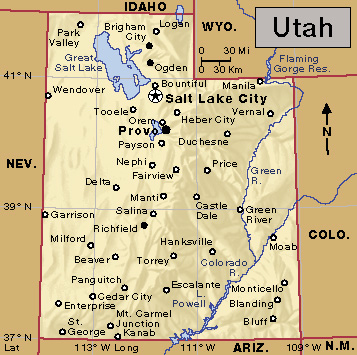
Most of Utah’s people live in urban areas. The state’s main urban areas—including Salt Lake City—lie in the north-central part of the state in an area called the Wasatch Front. This area is named for the Wasatch Range, mountains that rise just east of it.
Utah’s urban areas are centers of a variety of economic activities. Service industries, such as financial institutions and medical facilities, contribute greatly to the economy. Utah’s manufacturing plants turn out many products, including computer and transportation equipment, and metal products. Plants in Utah also process such farm products as fruits, grain, meat, milk, poultry, and vegetables.
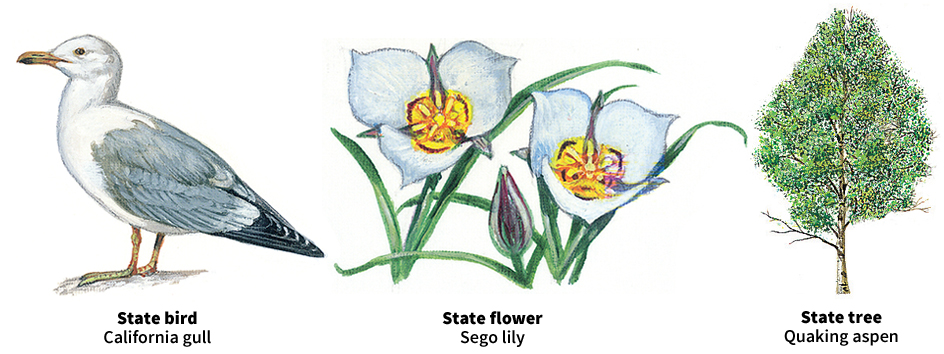
Utah has rich mineral deposits. Copper, natural gas, and petroleum are among the state’s leading mineral products. Copper is mined near Salt Lake City. Most of the natural gas and petroleum are in the eastern part of the state. Utah has national parks, ski resorts, and other facilities that attract tourists who contribute greatly to the economy. The state is also the home of economically important military installations.
Utah has snow-covered mountains and beautifully colored canyons. The wind and rain have formed rocks into many arches and natural bridges. Great Salt Lake is the largest natural lake west of the Mississippi River. Water in the Great Salt Lake is saltier than ocean water. Because the water is so salty, people can easily float in the lake. Deserts cover much of Utah, but artificially created reservoirs provide irrigation water for farmland. The largest reservoirs are Lake Powell, created by Arizona’s Glen Canyon Dam, and Flaming Gorge, behind Flaming Gorge Dam.

Mormon pioneers led by Brigham Young settled the Utah region in 1847. They called the region Deseret. This Mormon word means honey bee, and it stands for hard work and industry. Utah’s nickname is the Beehive State. The Congress of the United States organized the region as a territory in 1850 and named it Utah for the Indigenous (native) Ute people who lived there. The early white settlers fought several battles against these Indigenous inhabitants.
In 1861, the world’s first transcontinental telegraph message was sent across wires that met in Salt Lake City. The first transcontinental railroad system in the world was completed at Promontory in 1869. Utah was admitted to the Union as the 45th state on Jan. 4, 1896.
People
Population.
The 2020 United States census reported that Utah had 3,271,616 people. The state’s population had increased about 18 percent over the 2010 census figure of 2,763,885. According to the 2020 census, Utah ranks 30th in population among the 50 states.
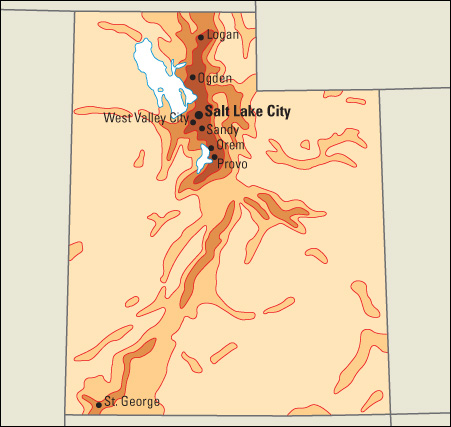
About 90 percent of Utah’s people live in the state’s five metropolitan areas (see Metropolitan area). The Ogden, Provo-Orem-Lehi, St. George, and Salt Lake City-Murray metropolitan areas lie entirely in the state. The Logan metropolitan area extends into Idaho. About 40 percent of Utah’s people live in the Salt Lake City-Murray metropolitan area.
Salt Lake City is the capital and largest city of Utah. There are eight other cities in the state with populations of more than 80,000. They are, in order of size, West Valley City, West Jordan, Provo, Orem, Sandy, St. George, Ogden, and Layton.
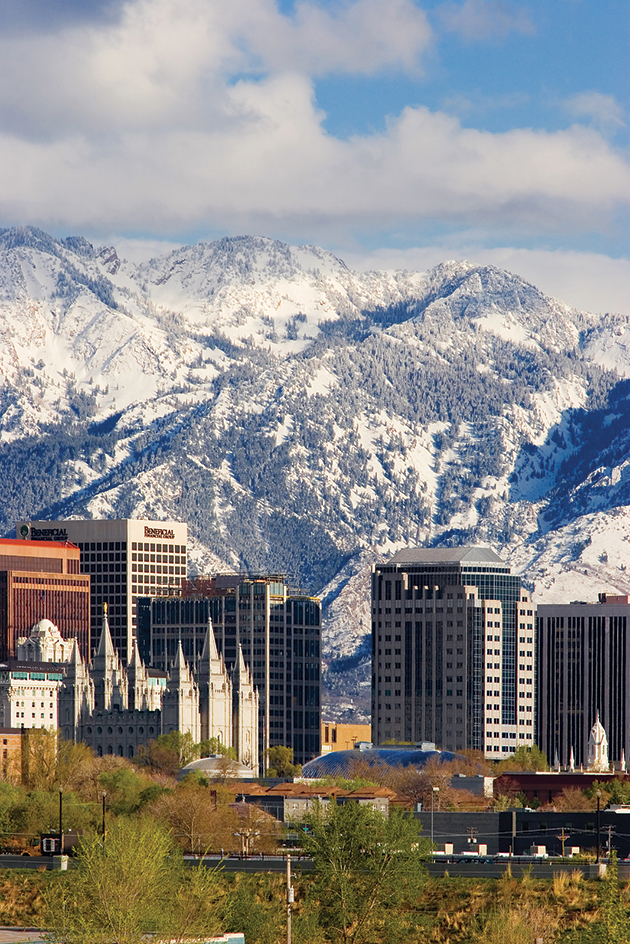
Non-Hispanic white people account for about 75 percent of Utah’s population. Hispanic Americans, who may be of any race, account for nearly 15 percent. The state’s largest population groups include people of Danish, English, German, and Irish descent.
About 60 percent of Utah’s people are Mormons. Most of the other church members are Roman Catholics or Protestants.
Utah’s population ranks among the youngest in the nation. The state also has one of the nation’s highest fertility rates—that is, the average number of children born to women of child-bearing age.
Schools.
Utah’s first school was a tent in the Salt Lake Valley. It was set up in 1847, the year the Mormons first settled in the region. By the mid-1850’s, the Utah region had more than 200 schools. Parents had to pay to send their children to these early schools because of a shortage of tax money. The region’s first free public school opened in American Fork in 1866. A law passed in 1878 made all public elementary schools free. In 1884, a constitutional convention provided for the establishment and support of free public high schools in Utah. However, school districts were not required to have high schools until 1911.
The State Board of Education supervises Utah’s public schools. It has 15 voting members, who are elected to four-year terms. The Board of Education appoints a state superintendent of public instruction as its executive officer. The State Board of Higher Education supervises colleges and universities in Utah.
Children in Utah must attend school from age 6 through 18. For the number of teachers and students in Utah, see Education (table: U.S. students, teachers, and school expenditures).
Libraries.
Utah’s first library was established with books hauled to the region by oxen in the 1850’s. In 1897, a state law provided for free public libraries. The Salt Lake City Public Library opened the next year. The Carnegie Free Library (now Weber County Library) in Ogden was the first building in the state to be used only as a library. It opened in 1903. In 1957, the Utah State Library Commission was established.
Today, Utah has public libraries throughout the state. There are large collections of Mormon literature at the libraries of Brigham Young University, located in Provo; and of the University of Utah, the Utah State Historical Society, and the Church of Jesus Christ of Latter-day Saints—all in Salt Lake City. The Church of Jesus Christ of Latter-day Saints library holdings also include one of the world’s largest collections of genealogical records and research.
Museums.
Utah has several art museums that feature regional, national, and international collections. The Utah Museum of Fine Arts in Salt Lake City has a collection representing various styles and periods. The Utah Museum of Contemporary Art exhibits works by contemporary artists. The Brigham Young University Museum of Art and the Springville Museum of Art have works by Utah painters.
In Salt Lake City, the Natural History Museum of Utah focuses on the geology and archaeology of the Great Basin and the western United States. The Utah State Historical Society researches the histories of Utah, Mormons, and the West. In Price, the Utah State University Eastern Prehistoric Museum includes a large dinosaur display. The Anasazi State Park in Boulder and the Edge of the Cedars State Park Museum in Blanding present collections and exhibits dealing with Ancestral Pueblo people, also known as the Anasazi.
Visitor’s guide
Millions of tourists visit Utah every year. The state’s forests, mountains, lakes, rivers, and extensive parklands are excellent for boating, cycling, fishing, hiking, hunting, sightseeing, skiing, and swimming. Popular destinations include Great Salt Lake, the mountains of the Wasatch and Uinta ranges, and Utah’s five national parks.
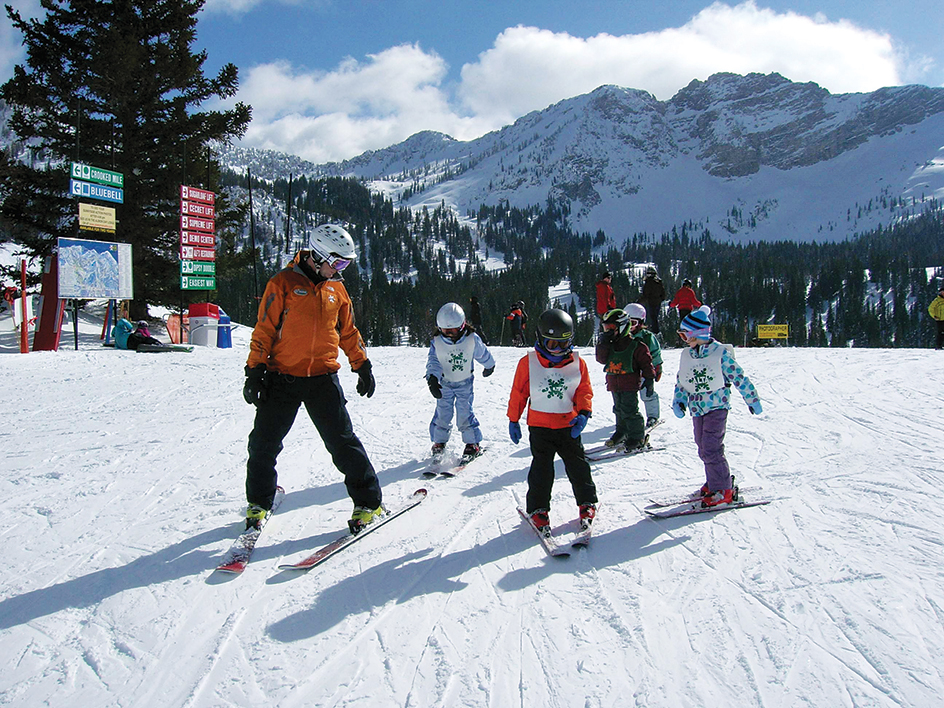
One of Utah’s most popular places to visit is the center of Mormonism—Temple Square in Salt Lake City. It includes the majestic Mormon Temple (officially the Salt Lake Temple of the Church of Jesus Christ of Latter-day Saints) and the Tabernacle. The Mormon Tabernacle, also known as the Salt Lake Tabernacle, is famous for its choir and huge organ. The Mormon Temple is not open to the general public.
Each July, Utahns observe the 1847 arrival of Mormon pioneers in the Salt Lake Valley. Many Utah cities stage celebrations to commemorate the arrival.
Land and climate
Land regions.
Utah includes parts of three major land regions: (1) the Rocky Mountains, (2) the Basin and Range Region, and (3) the Colorado Plateau.
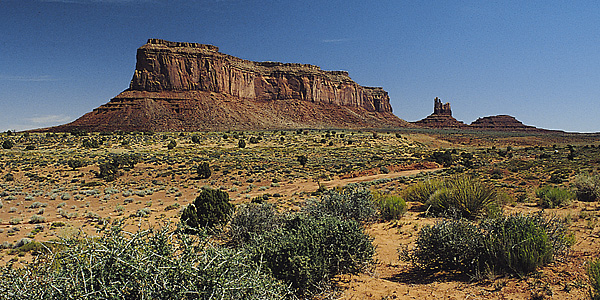
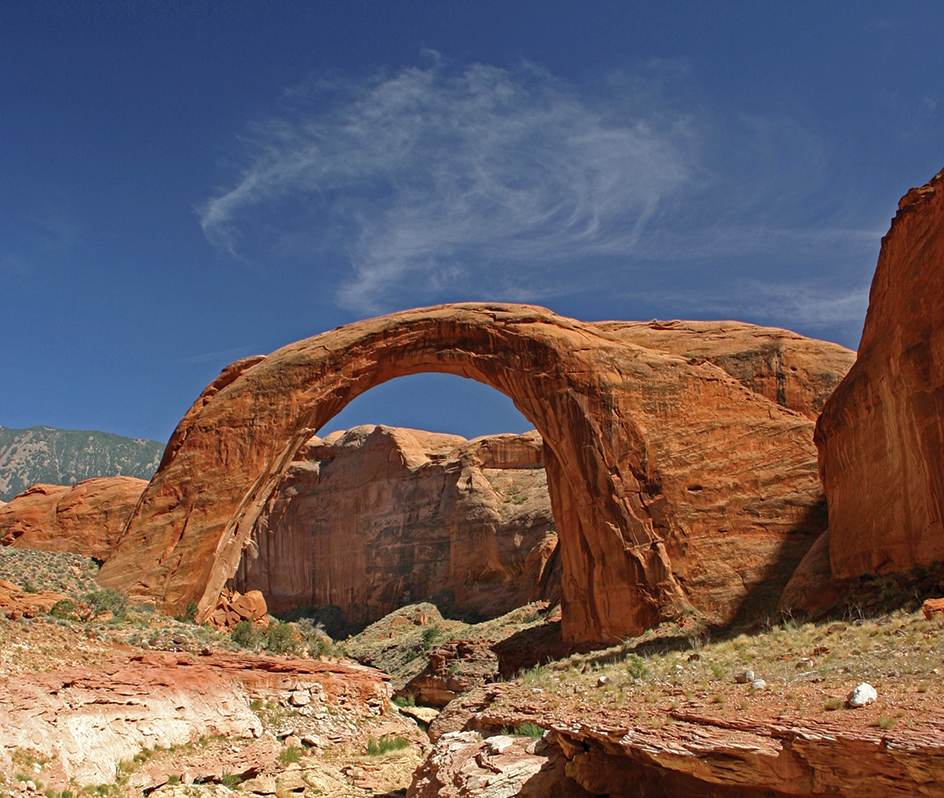
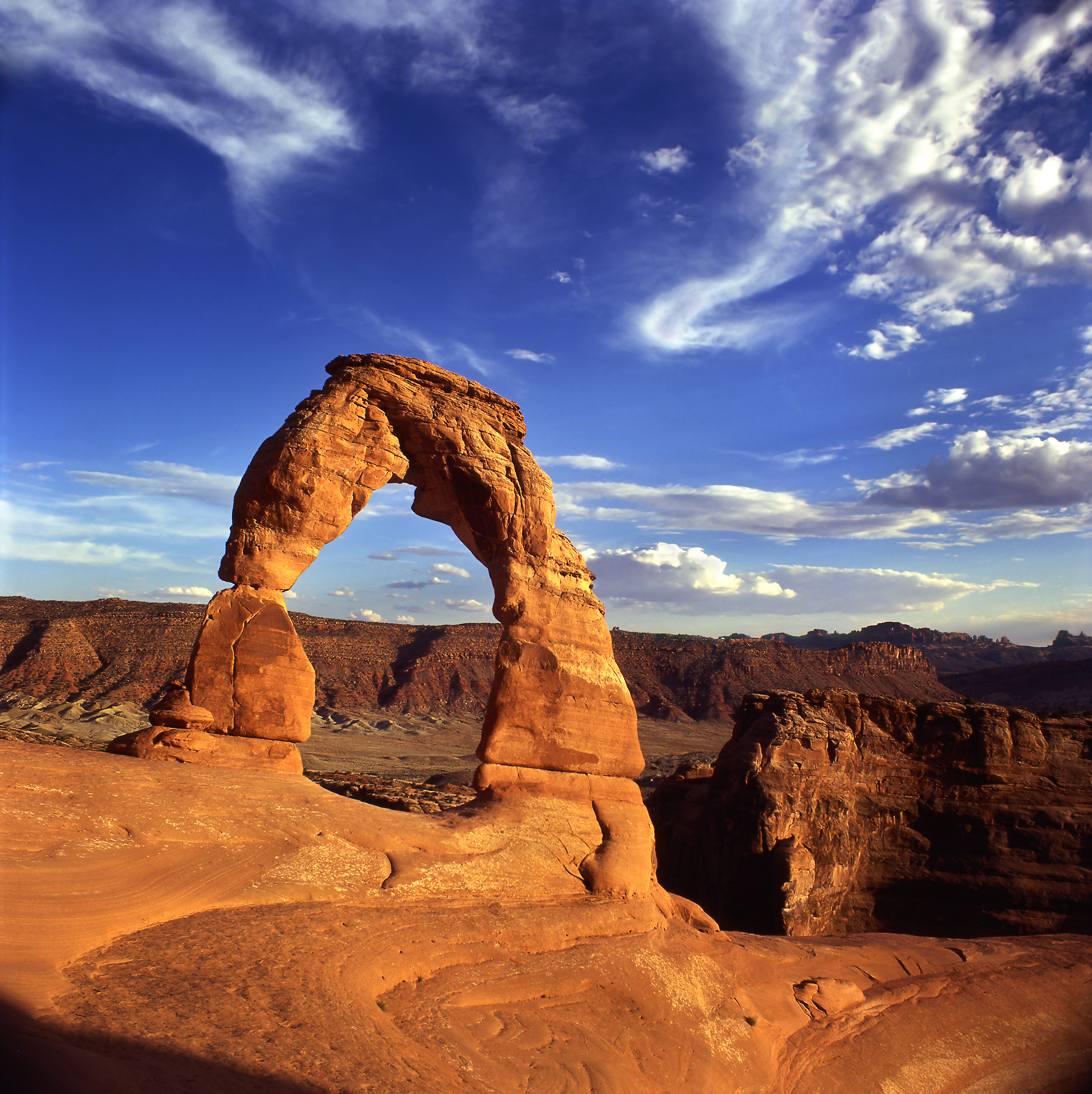
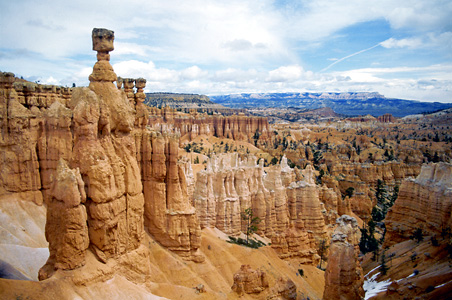
The Rocky Mountains
extend generally north and south across a large part of western North America. In Utah, two ranges of the Rocky Mountains—the Uinta and the Wasatch—form an angle in the northeast corner of the state. The Uinta Range extends westward from Colorado almost to Salt Lake City. It is the only major range of the Rocky Mountains that runs east and west. Several peaks in the Uinta Range are more than 13,000 feet (3,960 meters) high. Kings Peak, the highest point in Utah, rises 13,528 feet (4,123 meters) near the center of the range. Many lakes and flat-bottomed canyons in the Uinta Range were formed by glaciers that once covered the area.
The Wasatch Range extends from Mount Nebo, near Nephi, northward into Idaho. The steep western side of this range rises 6,000 to 8,000 feet (1,800 to 2,400 meters) above the valleys that border it. The Wasatch Range also has many canyons. The canyons provide water and serve as recreation areas for the people in Utah’s largest cities, just west of the mountains. Some of the canyons were glaciated (cut by glaciers).
The Basin and Range Region
covers parts of several states, including the western part of Utah. It is one of the driest regions in the United States. Small mountain ranges and broad basins cover the center of the region. Higher ranges and plateaus border it on the east and the west. Great Salt Lake lies in the northeast part of the region. West and southwest of the lake is a barren area called the Great Salt Lake Desert. The desert has about 4,000 acres (1,600 hectares) of flat salt beds that are as hard as concrete.
The extreme southwestern corner of Utah’s Basin and Range Region is the lowest and warmest area. It is known as Utah’s Dixie. The early settlers grew cotton and grapes there.
The Colorado Plateau
stretches over parts of Utah, Arizona, Colorado, and New Mexico. It covers most of the southern and eastern sections of Utah. This region consists of broad, rough uplands cut by deep canyons and valleys. High plateaus in the western part of the region include the Aquarius, Fish Lake, Markagunt, Paunsagunt, Pavant, Sanpitch, Sevier, and Tushar. These plateaus have elevations of more than 11,000 feet (3,350 meters). The famous Bryce, Cedar Breaks, and Zion canyons are in this area. The Henry Mountains rise west of the Colorado River, and the Abajo and La Sal mountains are east of the river. Utah’s southeastern corner meets the corners of Arizona, New Mexico, and Colorado. This is the only point in the United States where four states meet.
Rivers and lakes.
The uses of Utah’s rivers include providing irrigation for great stretches of farmland that otherwise would be desert. The Colorado River and its main tributary, the Green River, are the largest rivers in the state. These rivers and their many branches drain the eastern half of Utah. The Snake River of Idaho and its branches drain Utah’s northwest corner. The Bear, Provo, and Weber rivers begin in the Uinta Range and flow through the Wasatch Range into Great Salt Lake. The Sevier is the chief river of south-central Utah. It begins in the Paunsagunt Plateau and flows north, then bends to the southwest. Most of the Basin and Range Region, which extends across several Western states, has no outlet to the sea. It is the largest area of interior drainage in the United States.

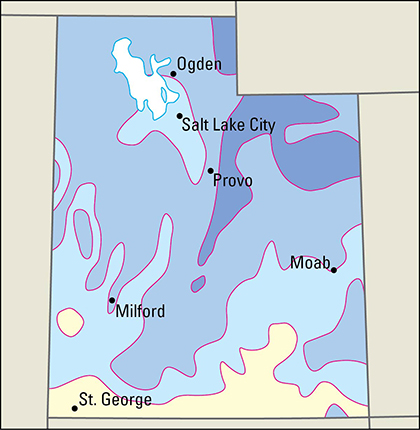
Thousands of years ago, a huge body of fresh water covered parts of Utah. Scientists have named this ancient sea Lake Bonneville. The Bonneville Salt Flats, in the middle of the Great Salt Lake Desert, cover part of the bed of Lake Bonneville. Great Salt Lake and Utah Lake are also part of what remains of Lake Bonneville. Great Salt Lake is the largest natural lake west of the Mississippi River. The water in Great Salt Lake is saltier than ocean water. Great Salt Lake is salty because its waters are not drained by outflowing streams. Instead, some of the water evaporates and leaves salt deposits behind. When heavy precipitation occurs, the lake expands in area, often causing floods. The Jordan River drains Utah Lake and keeps its waters fresh. Utah Lake and Bear Lake, which Utah shares with Idaho, are important reservoirs in which irrigation waters are stored. Many small lakes lie in the Boulder, Uinta, and Wasatch mountains.
Deserts
cover about a third of Utah. Few plants can grow in these deserts because of the lack of rainfall. The Great Salt Lake Desert lies west and south of Great Salt Lake. Other deserts include the Sevier Desert in west-central Utah, and the Escalante Desert in the southwestern part of the state.
Plant and animal life.
Forests cover about 30 per cent of Utah. The forest land is found in the mountains. Common trees include aspens, firs, junipers, pines, and spruces. Many kinds of grasses, shrubs, and wildflowers grow in the mountains. The dry sections of the state have cactus, creosote bush, greasewood, mesquite, and shadscale. The state’s wetter sections have grasses and sagebrush.
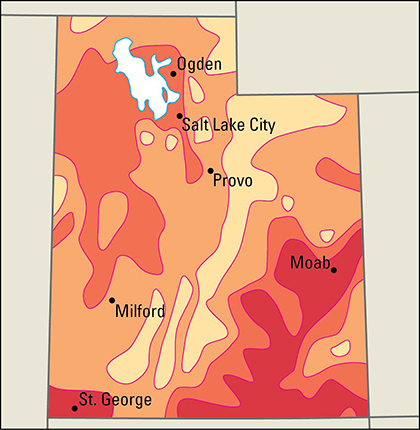
Common small animals in Utah include badgers, foxes, martens, muskrats, rabbits, ringtails, skunks, and weasels. Among the larger animals are black bears, bobcats, coyotes, lynxes, and mountain lions. The mule deer is the most common game animal. Buffaloes, elks, moose, and pronghorns are also found in the state. Ducks, geese, grouse, pheasants, and quail are common game birds of Utah. The state has such reptiles as lizards, toads, tortoises, and several kinds of snakes. Trout is the state’s most common fish. Other fish that are found in Utah include bass, catfish, graylings, perch, and whitefish.
Climate.
Average July temperatures in Utah range from 64 °F (18 °C) in the northeast to 85 °F (29 °C) in the extreme southwest. January temperatures average 20 °F (–7 °C) in the north part of the state and 41 °F (5 °C) in the southwest. Utah’s record high temperature, 117 °F (47 °C), occurred on July 5, 1985, at St. George. The lowest temperature was –50 °F (–46 °C), recorded at East Portal on Jan. 5, 1913.
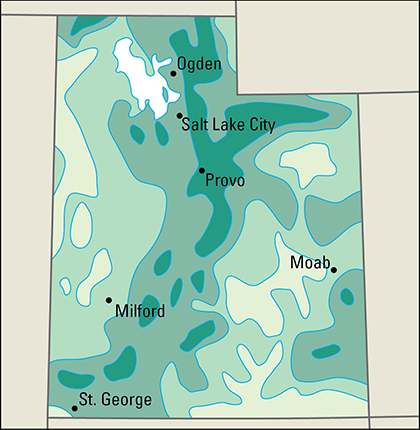
Yearly precipitation (rain, melted snow, and other moisture) varies from less than 5 inches (13 centimeters) in the Great Salt Lake Desert to up to 50 inches (130 centimeters) in the mountains of the northeast. The southwest gets little snow, but Alta, a ski area near Salt Lake City, averages about 500 inches (1,270 centimeters) a year.
Economy
The overall structure of Utah’s economy is dominated by service industries. Taken together, they account for the largest part of the gross domestic product—the total value of all goods and services produced in the state in a year. Other important economic activities in the state include manufacturing and construction. The U.S. government owns about two-thirds of the state’s land.
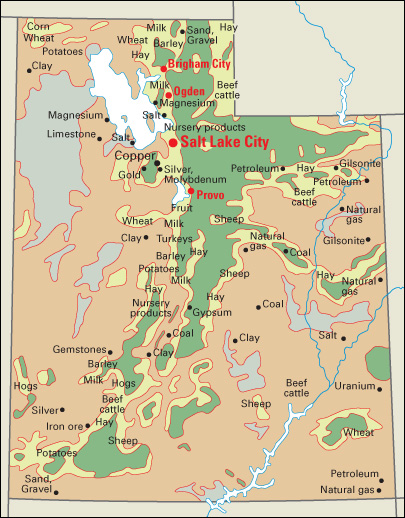
Natural resources
of Utah include rich mineral deposits, and mountain and valley soils.
Minerals.
Coal, natural gas, and petroleum are found in the Colorado Plateau. In addition, the state has some of the nation’s richest deposits of oil shale and tar sands. Bingham Canyon, near Salt Lake City, has rich deposits of copper, gold, molybdenum, and silver. Important deposits of gold and silver lie near Utah Lake. Great Salt Lake is a source of magnesium and several salts.
Soils
of Utah are generally poor for farming. Most of the mountain soils are poorly developed. The soils in many valleys are mixtures of sand, gravel, and clay carried down by mountain streams. Where water is available, these valley soils can produce good crops.
Service industries
account for the greatest portion of the gross domestic product of Utah. Most of the service industries are concentrated in the metropolitan areas.
Salt Lake City, the state capital, is the center of government activities. It is also the state’s chief financial center. Many hotels, restaurants, and retail trade establishments operate in the Ogden, Provo, and Salt Lake City areas.
Several credit card companies have large operations in Utah. The real estate sector benefits from the state’s rapid population growth, which has resulted in many new homes and office buildings. Hill Air Force Base is one of Utah’s leading employers.
Manufacturing.
Computer and electronic products, processed food, and transportation equipment are among Utah’s leading manufactured products. Communication equipment, computer microchips, and scientific instruments are leading electronics products. Most of Utah’s electronic equipment is made in the Salt Lake City and Ogden areas. Processed foods include dairy products, fruit and vegetable preserves, and meat products. Rocket propulsion systems for spacecraft and weapons systems and air bags for motor vehicles are manufactured near Brigham City and Salt Lake City. 
Other products manufactured in Utah include petroleum products and primary metals. Large oil refineries operate in and around Salt Lake City. Aluminum and copper are important metals produced in the state.
Mining.
Utah’s most valuable mined products include coal, copper, natural gas, and petroleum. Nearly all of Utah’s coal comes from the central part of the state. Copper is mined near Salt Lake City. Utah is a leading producer of copper, as well as gold, molybdenum, and silver. Eastern Utah produces a large amount of natural gas and petroleum. Uintah County is the nation’s only producer of gilsonite, a solid form of asphalt. The Great Salt Lake’s water is used to produce magnesium and natural salts.
Agriculture.
Farmland covers about a fifth of Utah. Livestock and livestock products provide over half of the state’s total farm income. Beef cattle and milk are Utah’s leading farm products. Both beef and dairy cattle are raised throughout the state. Eggs, hogs, and sheep are also important farm products. Many hogs are raised in Beaver, Cache, and Iron counties. Utah ranks among the nation’s leading sheep-raising states.
Crops account for much of Utah’s farm income. Hay, Utah’s leading crop, is grown throughout the state. Barley, corn, and wheat are grown in northern Utah. Utah’s fruits include apples, cherries, and peaches. Greenhouse and nursery products are also important.
Electric power and utilities.
The majority of Utah’s electric power comes from coal-fired steam plants in Emery, Millard, and Uintah counties. Most of the remaining electric power is from natural gas plants.
Transportation.
The first transcontinental railroad system in the United States was completed in Utah on May 10, 1869. On that date, the Central Pacific and Union Pacific railroads were joined at Promontory.
Today, rail lines provide freight service, and passenger trains link major Utah cities to major cities in other states. A light rail system serves the greater Salt Lake City area. Utah has an extensive system of roads and highways. The largest airport is in Salt Lake City.
Communication.
Utah’s first newspaper, the Deseret News, was established in Salt Lake City in 1850. Today, the state’s largest newspapers are the Deseret News and The Salt Lake Tribune, both of Salt Lake City, and the Standard-Examiner of Ogden.
Government
Constitution.
Utah adopted its constitution in 1895, the year before it became a state. Constitutional amendments (changes) may be proposed by the state legislature or by a constitutional convention. An amendment proposed by the Legislature must receive the approval of two-thirds of the members of each house. The amendment must then be approved in a general election by a majority of the people voting on the issue.
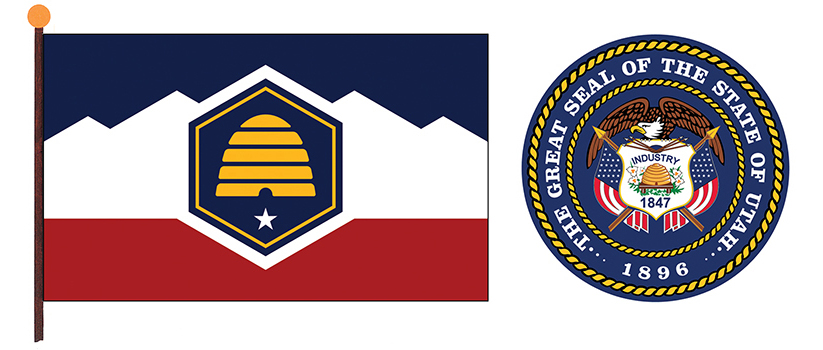
Before a constitutional convention can meet, it must be approved by two-thirds of the members of each house of the Legislature. It must then be approved by a majority of the voters in a general election. Amendments proposed by a constitutional convention must receive a majority of the votes cast in a general election.
Executive.
The governor of Utah is elected to a four-year term. Other executive officials—also elected to four-year terms—include the attorney general, lieutenant governor, state auditor, and state treasurer. The governor and the other elected executive officials may serve any number of terms.
The governor appoints various state officials who are not elected, including the executive directors of various state departments and members of state boards. Most of the appointments must be approved by the Senate.
Legislature
of Utah consists of a 29-member Senate and a 75-member House of Representatives. Members of both houses are elected from districts drawn up according to population. State senators serve four-year terms and state representatives serve two-year terms. They may serve any number of terms. 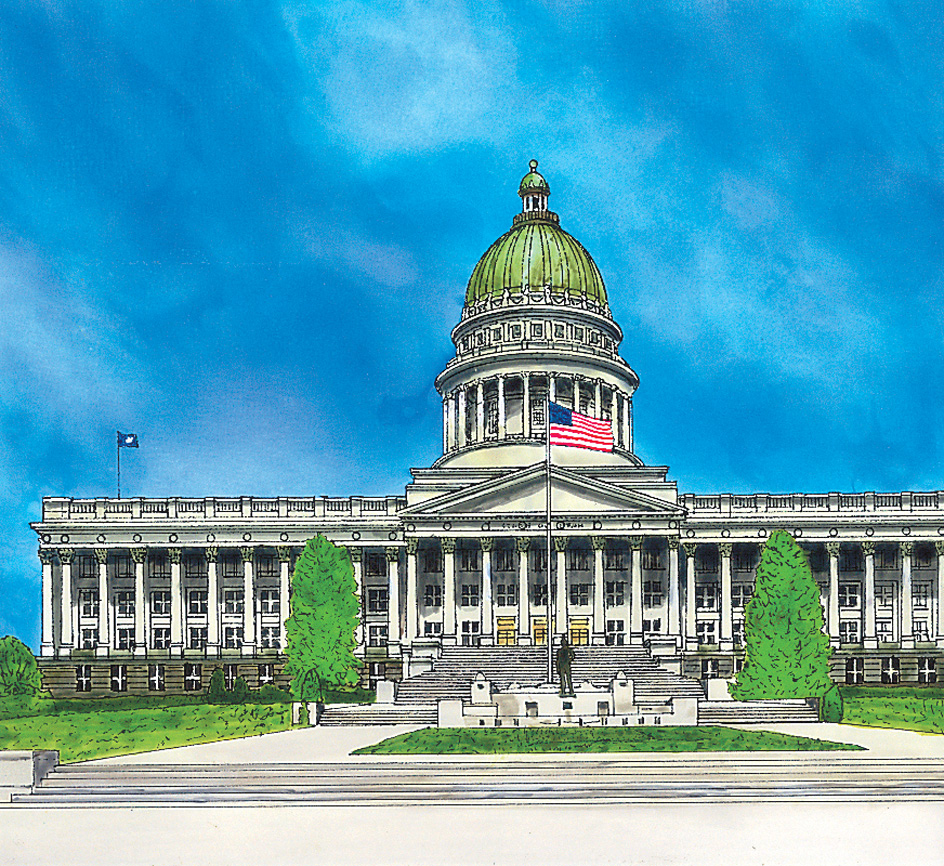
The Legislature meets annually on the first Tuesday after the third Monday in January. Regular sessions of the Legislature last 45 days. The governor may call special sessions of the Legislature. These special sessions may not last more than 30 days.
Courts.
Utah’s highest court is the Supreme Court, which has five justices. The state’s Court of Appeals has seven judges. Each district has two or more District Court judges, depending on population. Other Utah courts include justice courts, juvenile courts, and municipal courts.
The governor appoints the judges of the Supreme Court, Court of Appeals, District Courts, and juvenile courts, with the advice and approval of the Senate. These judges periodically run for reelection to continue in their posts.
Local government.
Each of Utah’s 29 counties is managed by a three-member board of county commissioners. Members of each board are elected to four-year terms. The board is responsible for county affairs and for supervising county departments and officers. In most other counties, the executive and legislative responsibilities are separated. The government consists of a county executive and county council. Salt Lake County, the state’s largest county, operates under a mayor-council government.
All other county officers are elected to four-year terms. They include an assessor, attorney, auditor, clerk, recorder, sheriff, surveyor, and treasurer. In some counties, some of these offices are combined.
Municipalities in Utah are divided into six classes, according to population. These classes are: (1) first-class cities, (2) second-class cities, (3) third-class cities, (4) fourth-class cities, (5) fifth-class cities, and (6) towns. First-class cities have 100,000 or more people. Second-class cities have between 65,000 and 99,999 people. Third-class cities have between 30,000 and 64,999 people. Fourth-class cities have between 10,000 and 29,999 people. Fifth-class cities have between 1,000 and 9,999 people. Towns generally have fewer than 1,000 people.
Any city or town may elect to use a council-manager or a mayor-council form of government. Otherwise, first- and second-class cities use the commissioner form of government; third-, fourth-, and fifth-class cities have a mayor-council form; and towns are governed by a town council. The state Constitution gives municipalities the right to adopt their own charters. This right is called home rule, but few Utah municipalities have used it.
Revenue.
Taxes account for about two-fifths of the state government’s general revenue (income). Most of the rest comes from federal grants and other U.S. government programs, and charges for government services. A general sales tax and a personal income tax make up most of the tax revenue. Taxes on motor fuels and corporate income are also important sources of tax revenue.
Politics.
Through most of Utah’s history, political strength was fairly evenly divided between the Democratic and Republican parties. But in the late 1900’s, power shifted to the Republicans.
History
First inhabitants.
Indigenous peoples probably lived in the Utah region several thousand years ago. The Ancestral Pueblo, one of the early Indigenous groups, made their homes in pueblos and in cliff dwellings. Another early Indigenous group, the Fremont, lived in pit houses, dwellings dug into the ground. The Navajo arrived in the Utah region before the 1700’s, and now occupy large areas in southeastern Utah. White explorers who reached the Utah region in the late 1700’s found four major groups of Indigenous tribes—the Gosiute, Paiute, Shoshone (Snake), and Ute.
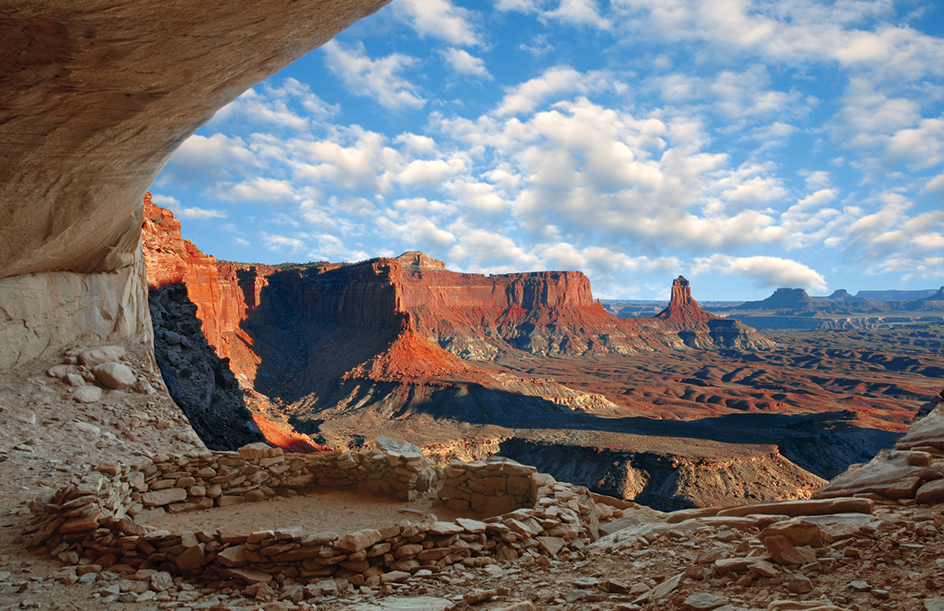
Early exploration.
In 1765, a Spanish expedition led by Juan María de Rivera reached what is now southeastern Utah. In 1776, while American colonists were fighting for their independence from the United Kingdom, two Spanish Franciscan friars led an expedition into the Utah region. They were Silvestre Velez de Escalante and Francisco Atanasio Dominguez. The friars reached Utah Lake. Later, a few other Spaniards visited the region. But Spain was not interested in setting up colonies there. The first Americans to visit the region probably crossed what is now northern Utah in 1811 and 1812. They were part of a fur trading expedition.
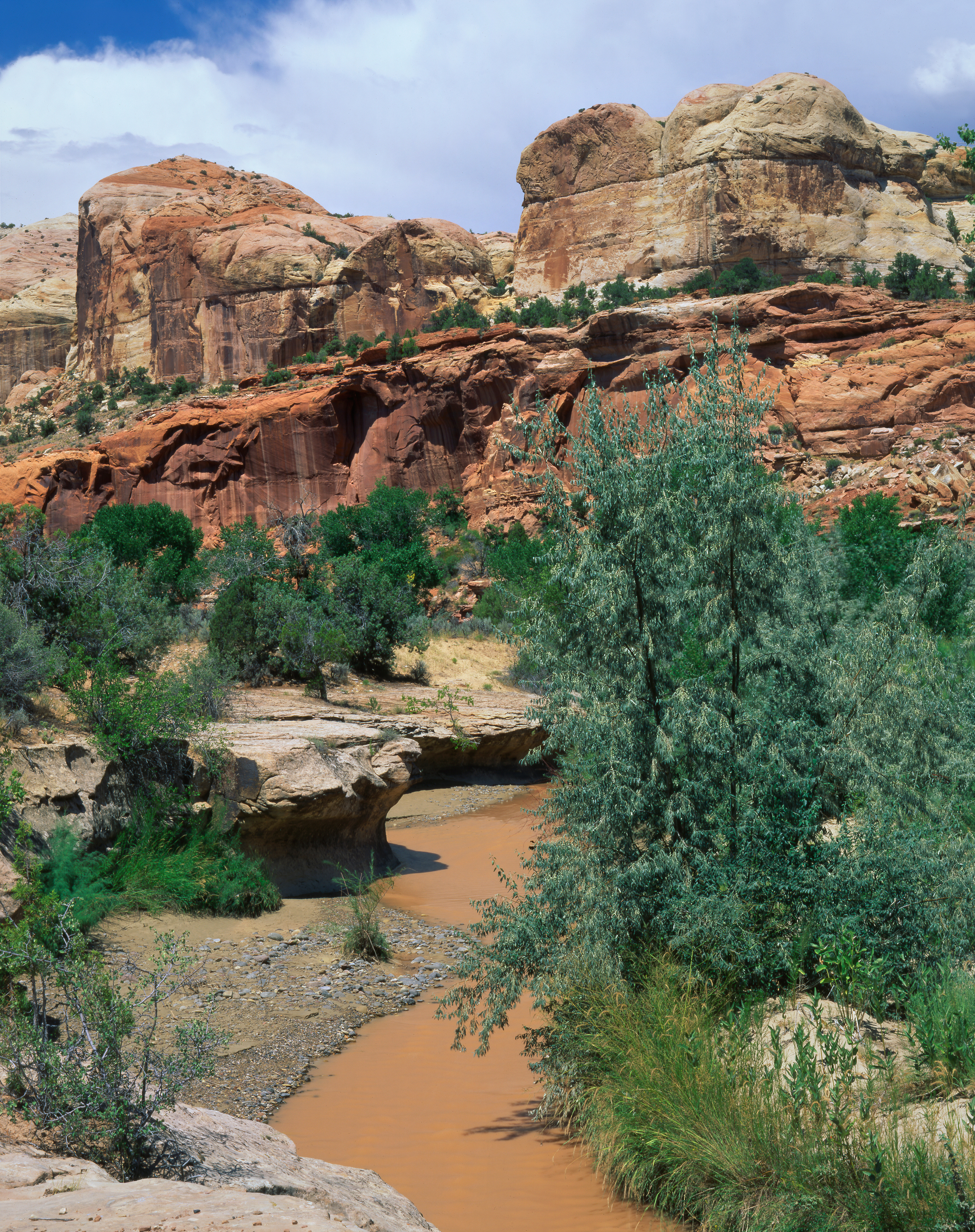
Jim Bridger, a famous scout, was probably the first white person to see Great Salt Lake. He reached its shores during the winter of 1824-1825. Bridger tasted the salty water, and thought he had found an ocean. Hundreds of fur trappers and traders soon came to the area from Taos, New Mexico; St. Louis, Missouri; and British posts in what are now Montana and Washington. By 1830, travelers were crossing central Utah to get from Santa Fe, New Mexico, to Los Angeles.
The Mormons
were Utah’s first permanent white settlers. This religious group belonged to the Church of Jesus Christ of Latter-day Saints. Joseph Smith established the church in Fayette, New York, in 1830. Brigham Young became leader of the Mormons after Smith’s death in 1844. The Mormons were persecuted nearly everywhere they went. They traveled to Ohio, Missouri, and Illinois in search of religious freedom. In 1846, Young led a group of his people west. They reached the Great Salt Lake region in 1847, and Young settled there. He planned communities for his followers. See Mormons; Mormon Trail. 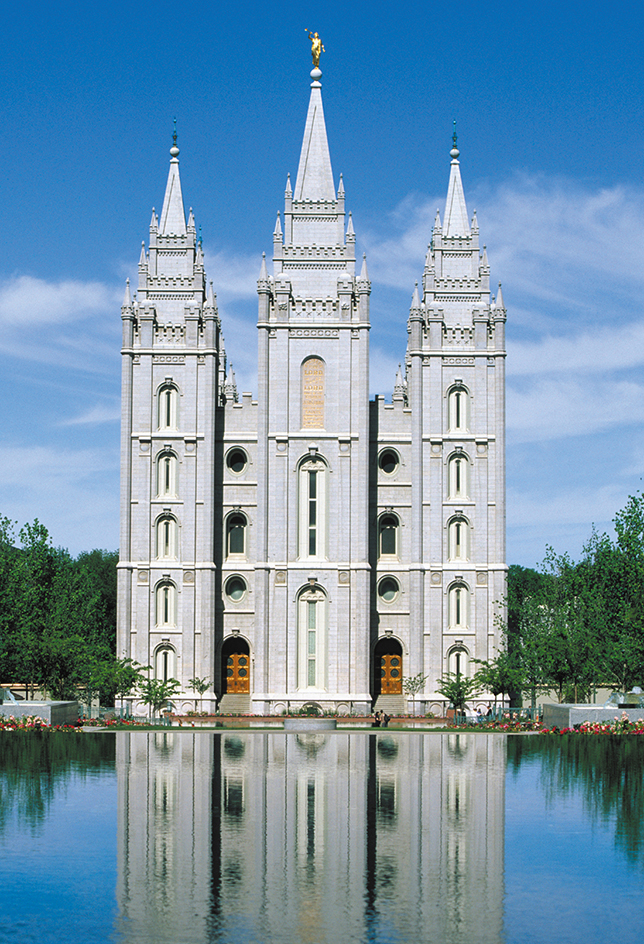
Many groups of Mormons settled in the valleys of north-central Utah. They irrigated the valleys and made farming productive. In the late 1840’s, swarms of grasshoppers invaded the valleys and threatened to ruin the settlers’ crops. But sea gulls from Great Salt Lake ate the grasshoppers. The sea gull later became the state bird, and a monument was built in Salt Lake City to honor the gulls. The kind of grasshopper that attacked the settlers’ crops became known as the Mormon cricket.
In 1849, the Mormons established their Perpetual Emigrating Fund. This fund helped bring to Utah many Mormons who could not pay for the trip. The fund operated for about 40 years. It brought about 80,000 Mormons to Utah, including many from Denmark, England, Norway, Scotland, Sweden, and Wales.
Indigenous relations.
Relations between the Mormons and Indigenous people were peaceful at first. But some Indigenous people resented the settlers who had taken their land.

Beginning in 1853, a Ute chief named Walker led attacks against several Mormon settlements. These attacks were known as the Walker War. In 1854, Brigham Young persuaded Walker to end the attacks. For several years, the settlers and the Ute lived peacefully. But in 1865, another Ute chief, Black Hawk, led an uprising against the Mormons. The attack started the Black Hawk War. Other tribes joined in the fighting, and many people on both sides were killed. The settlers suffered losses of over $1 million, and the Indigenous people lost control of nearly all their tribal lands. Black Hawk and his followers stopped fighting in 1867 and signed a treaty in 1868. However, other Indigenous people made occasional raids until late 1872. Most of the Ute settled on a reservation in the Uinta Basin.
Bannock and Shoshone raids in northern Utah and southern Idaho continued until 1863, when U.S. Army forces under General Patrick E. Connor defeated them in the Battle of Bear River in southeastern Idaho.
Territorial days and statehood.
The Utah region belonged to Mexico when the Mormons first arrived in 1847. At the time, the United States and Mexico were fighting the Mexican War (1846-1848). The United States won the war and acquired from Mexico a large area of land, including the Utah region. 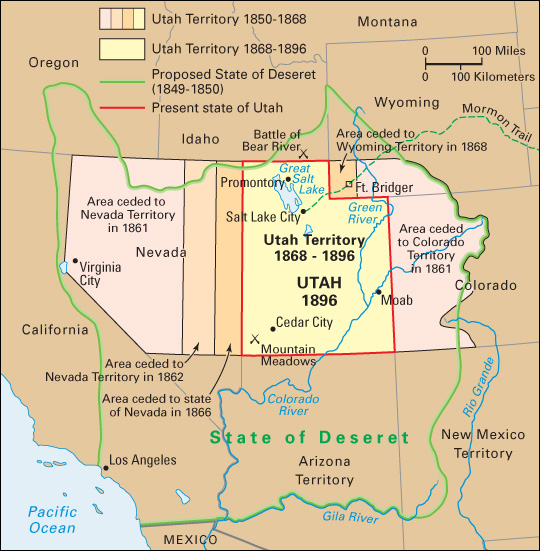
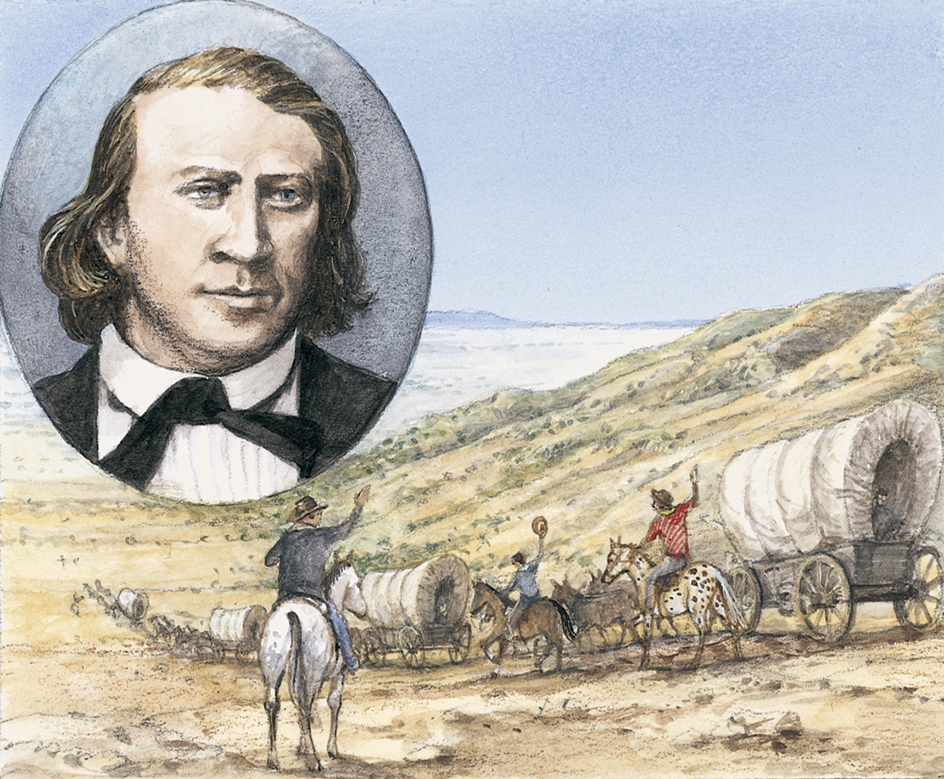
In 1849, the Mormons established the State of Deseret. They set up a temporary government with Brigham Young as governor. Church leaders filled other government offices. The settlers adopted a constitution and asked to be admitted to the Union. But Congress was engaged in a bitter debate over the question of slavery in the United States. This debate resulted in the Compromise of 1850. Part of the compromise established the Utah Territory, with Young as the first territorial governor. The territory extended far to the east and west of present-day Utah. See Compromise of 1850.
Between 1849 and 1895, Utah asked several more times to be admitted to the Union. But Congress refused to admit Utah because of the Mormon practice of polygamy (one man having more than one wife). Nearly 30 percent of Utah’s families were polygamous.
President James Buchanan wanted to take control of the Utah Territory away from the Mormons. In 1857, he appointed Alfred Cumming of Georgia as territorial governor, in place of Brigham Young. Buchanan sent federal troops to enforce the appointment. This period became known as the Utah, or Mormon, War. The soldiers marched toward Utah, stopping along the way during the winter of 1857-1858. In September 1857, a group of Mormons and their Indigenous allies attacked a party of about 120 travelers from Arkansas passing through Utah. The Mormons may have believed rumors that travelers had poisoned local wells and cattle. Or they may have been motivated out of greed for the travelers’ supplies, or by religious fervor (enthusiasm). The attackers murdered most of the travelers. Only several small children were permitted to live. The incident became known as the Mountain Meadows Massacre.
The federal troops arrived in Utah in the spring of 1858. The war ended shortly afterward, though the troops stayed three years. Bad feeling between the Mormons and the soldiers existed throughout this period. Brigham Young was no longer territorial governor, but he remained the real leader of the Mormons. The troops left Utah when the Civil War began in 1861.
During the 1860’s, Utah’s boundaries were changed several times. Parts of the territory were given to Nevada, Colorado, and Wyoming. Congress established Utah’s present boundaries in 1868.
The pony express began carrying mail on April 3, 1860. Pony express riders crossed Utah on their journeys between St. Joseph, Missouri, and Sacramento, California. On Oct. 26, 1861, the operators of the pony express announced the closing of the express. Two days earlier, telegraph lines from Washington, D.C., and from San Francisco had met in Salt Lake City. This was the nation’s first transcontinental telegraph. It provided a link between the eastern and western sections of the United States, and so the pony express was no longer needed.
In 1862, Congress passed a law forbidding polygamy. That same year, federal troops were again sent to Utah, under the command of Colonel Patrick E. Conner. Conner was interested in mining, and he encouraged his troops to prospect for minerals. In 1863, gold and silver were discovered in Bingham Canyon. Conner sent out word of the discovery. He hoped that a mining boom would bring a flood of non-Mormons into Utah and reduce Mormon control of the territory. But profits from Utah’s minerals were small during the 1860’s, mostly because of transportation problems. Few prospectors came to the territory. By the 1870’s, however, many mining companies were operating in Utah.
Plans for a transcontinental railroad had first been made during the 1850’s. In 1863, the Central Pacific Railroad began building eastward from Sacramento, and the Union Pacific built westward, starting in Omaha, Nebraska. The two lines met at Promontory, Utah, on May 10, 1869. A railroad-building boom soon began in Utah. 
During the 1880’s, federal courts began enforcing federal laws against polygamy. About 1,000 Mormons were fined and sent to prison. A law passed in 1887 permitted the U.S. government to seize church property of the Mormons for use by public schools. In 1890, Wilford Woodruff, the church president, advised the Mormons to give up polygamy, which the church prohibited after 1904.
In 1895, Utah submitted a new constitution to the U.S. Congress. The Constitution outlawed polygamy and prevented control of the state by any church. Utah was admitted to the Union as the 45th state on Jan. 4, 1896.
The early 1900’s
brought expansion of the railroad construction that had begun after the Civil War. The railroads opened new markets for Utah’s farm and mining products. Utah farmers increased livestock operations, and beef cattle and sheep became important products. Surface mining methods were introduced in Bingham Canyon in 1906. The state’s copper production increased greatly. A huge federal irrigation project on the Strawberry River, completed in 1913, increased the amount of Utah’s irrigated farmland.
Large smelters were built in the Salt Lake Valley during the early 1900’s, and Utah’s smelting industry grew. After the United States entered World War I in 1917, Utah mines supplied the Allies with large supplies of nonferrous metals (metals containing no iron).
Utah was hit hard by the Great Depression of the 1930’s. The mining industry suffered. Farm prices dropped. Utah had one of the nation’s highest percentages of unemployed workers. The state’s economy improved in the late 1930’s when the depression eased.
The mid-1900’s.
Utah’s manufacturing and mining industries prospered during World War II (1939-1945). After the war, the government increased its activities in Utah. Military installations established during the war were expanded. In the 1950’s, missile plants were built in Brigham City, Ogden, and Salt Lake City. By 1959, the state had become a center of missile production.
Between 1940 and 1970, Utah changed from an agricultural to an industrial state. The manufacture of steel products became an important industry. In 1952, a rich uranium deposit was discovered near Moab. Oil and gas fields were developed in eastern and southeastern Utah. In the early 1960’s, the construction of Flaming Gorge Dam, Glen Canyon Dam, and many smaller dams brought further industrial growth. 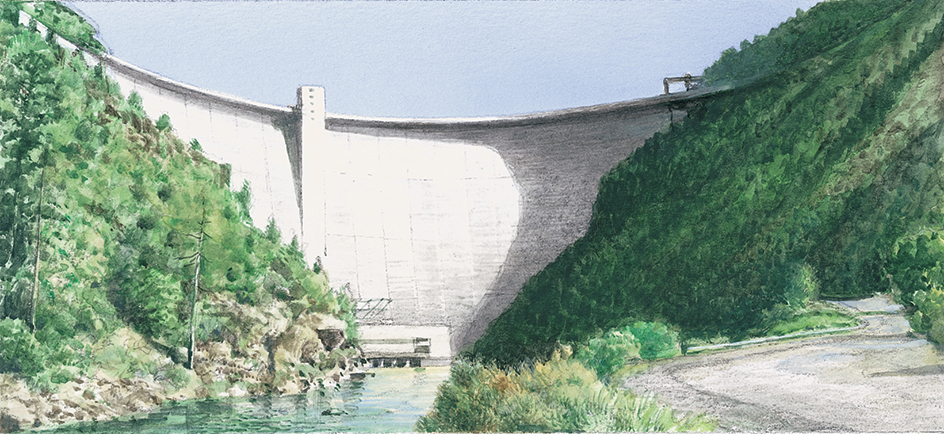
Tourism became an important industry in the state during the 1950’s and 1960’s. An increase in the number of urban residents led to demands for more recreational facilities, and development of outdoor recreation areas in the state boomed. Ski resorts in the Wasatch Mountains attracted visitors from throughout the nation.
During the 1960’s, the Utah economy suffered a series of setbacks. The need for missile parts produced in the state declined in 1963, and the value of Utah’s missile industry fell. A slump in mineral prices caused the value of the state’s mineral products to drop.
The cost of operating Utah’s schools soared between the late 1940’s and early 1960’s. In 1963, Utah educators requested an additional $25 1/2 million in state aid to education. The Legislature provided $11 million. Governor George D. Clyde then set up a commission to examine Utah’s educational needs. In 1964, the commission urged that aid to education be increased by another $6 million. Clyde refused to approve the increase because he felt it would cripple the state’s economy.
The National Education Association (NEA) urged teachers throughout the United States not to accept jobs in Utah until the problem was solved. Never before had U.S. educators organized a protest against an entire state. In 1965, the Legislature increased school aid by $251/2 million over a two-year period. The NEA then ended its protest.
During the 1960’s, environmental concerns received increased attention in Utah. In 1968, nerve gas being tested in western Utah by the U.S. Army accidentally poisoned about 6,000 sheep. Utahns demanded an end to the testing and storing of such chemicals in the state. In addition, the Utah Legislature set up a statewide program in 1969 to fight increasing air pollution.
The late 1900’s.
A nationwide oil shortage during the early 1970’s led to increased coal production in Utah. Also, several oil companies invested millions of dollars to lease federally owned oil-shale land in Utah. But in the late 1970’s, the high cost of producing oil from shale rock and concern over possible pollution problems delayed the development of Utah’s oil-shale resources.
Utah’s economy began to broaden its base in the 1980’s. Service industries and tourism expanded, and computer software businesses developed in the state. Some industries suffered, but—overall—diversity led to economic progress in the 1980’s and into the 1990’s.
The early 2000’s.
High rates of residential and industrial growth led to increased demand for the state’s limited water resources. The Central Utah Project—a system of aqueducts, canals, dams, and reservoirs—directs water to parts of the state in need. Work on the huge undertaking, which has benefited many Utah communities, began in 1967 and continued into the early decades of the 2000’s. In addition to improving the state’s water distribution network, Utah officials also worked to implement conservation measures to save water.
Utah also faced other challenges. Conservationists and other residents of Utah remained locked in disputes regarding land use. Conservationists argued that Utah’s desert and mountain areas must be preserved. Other residents favored using part of the land for power plants, mining, and other purposes. Education costs remained a problem in Utah. Because of the Mormon emphasis on family and education, Utahns have large families and average more years in school than people in any other state, leading to high costs.
In 2002, Utah became the focus of international attention as it hosted the Winter Olympic Games. The state’s tourist industry boomed.
In 2003, President George W. Bush named Utah’s governor, Michael O. Leavitt, to head the U.S. Environmental Protection Agency. Lieutenant Governor Olene Walker replaced him. Walker became the first woman to serve as Utah’s governor. She served through 2005, when Jon M. Huntsman, Jr., succeeded her. Huntsman was reelected in 2008 but resigned in 2009 after President Barack Obama named him the U.S. ambassador to China. Lieutenant Governor Gary R. Herbert replaced Huntsman.
